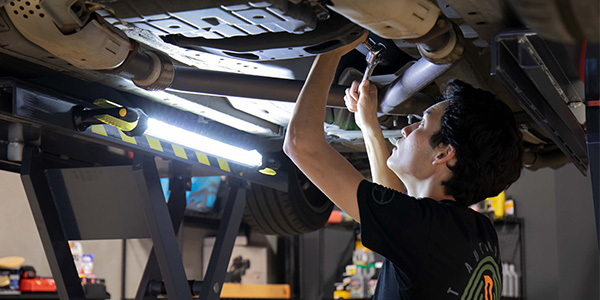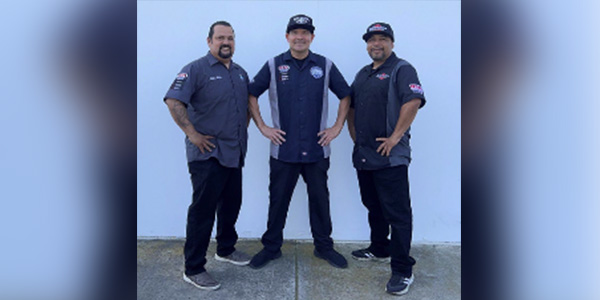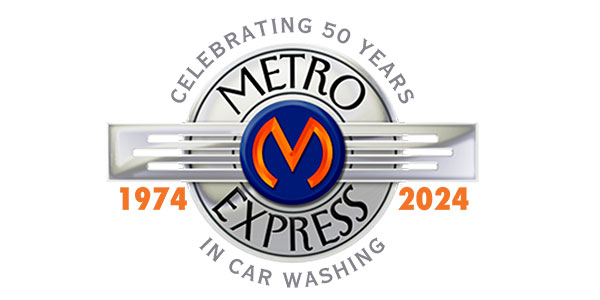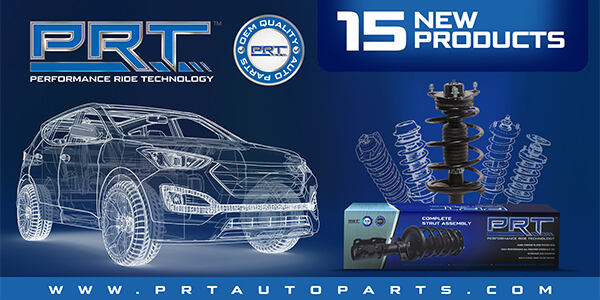Many owners and operators might not realize how much customers actually notice — and remember — about a carwash location. While a well-lit carwash can help to create a comfortable, inviting experience, a dark location may result in customers not visiting again. Many owners and operators primarily focus on producing a quality wash and a high level of customer service, meaning lighting and other areas of the wash become secondary or tertiary considerations, or they are not considered at all until issues emerge. Fortunately, improvements in LED (light-emitting diode) technology can help all owners improve their site’s lighting and, possibly, their bottom lines.
LEDs provide the ideal combination of performance, ease of maintenance and long-term cost savings. Add in the environmental awareness of switching from traditional lighting to LEDs, and your carwash can appeal to a larger crowd that is mindful of protecting the environment and will drive farther to frequent your wash.
Making the light switch
Although site lighting may not be a typical focal point of your day-to-day operations, customers likely notice this critical area of your business during each visit. Compared to traditional lighting, professionals note the LED advantage.
“One of the most overlooked and underappreciated benefits of LED lighting is the dramatic improvement it can have on the overall aesthetics of your facility,” explains Cory Baright, vice president of operations at G&G LED LLC. “Bright bays and the crisp, clean white light produced by LEDs gives off a refreshing, modern appearance that makes customers feel welcomed and secure at any hour.”
LED technology is a type of solid-state lighting that uses a semiconductor to convert electricity into light. Unlike incandescent bulbs, which release up to 90 percent of their energy as heat, LEDs use energy more efficiently with little wasted heat. And, most importantly for a carwash environment, LEDs are more durable than traditional lighting.
“An important benefit of LED lighting that is not commonly known is the durability of LED chips. There are no gases or filaments involved with LEDs,” asserts Michael Call of Mile High LED Systems. “Instead, they are a solid-state computer chip which enables them to be used in high-vibration environments and other locations never previously considered for lighting, [such as] inside moving carwash equipment.”
Another significant advantage to using LED technology at your carwash is the overall cost savings involved with maintenance and change outs. Since LEDs are more durable and last longer than incandescent bulbs and fluorescent lights (CFLs), owners and operators can focus on what is most important at the carwash: the customer.
“LED lights do not require the replacement of a lot of bulbs, capacitors or ballasts,” notes Gary Frey, sales manager for Kleen-Rite Corp. “These are hidden cost savings that many people do not think about.”
LED planning
Many LED options are available today. According to Frey, owners and operators should consider several questions when initially looking to switch from traditional lighting to LEDs, including:
- What is the reasoning for the purchase?
- Are you strictly looking for cost savings?
- What is the potential return on investment?
- Are you switching for safety reasons?
- Are you looking to improve your current light output?
- Are upfront savings possible?
- Are the LEDs for the customers’ or workers’ benefit, or both?
“Developing a light plan is important,” adds Frey. “And buyers should have an educated conversation with their suppliers.” From these conversations, an owner might realize that rebates and incentives are being offered from the local electric provider or the manufacturer as well as code requirements.
Similar to the tunnel vision you have of your carwash, as mentioned earlier, LED suppliers and manufacturers focus on and specialize in LED technology. Owners and operators must maximize this expertise to create customized lighting solutions for their locations.
“Most LED suppliers will be able to assist with defining the light output needed; however, there are other factors to consider beyond light output and product cost. Be sure that the LED being considered for installation has been designed for the application being used. This includes consideration of installation costs, lumens per watt used, product durability for a given application, the quality of the light installed and, specifically for color LED applications, [consideration of] the space [and] objects being illuminated.”
Avoiding dark results
While this technology might seem foolproof and seamless to implement — and in many cases it is —certain mistakes can be made when switching to LEDs. According to Baright, one prevalent pitfall can be costly to any business.
“The most common mistake we see owners make is purchasing LED lighting products that are not UL-certified and do not meet electrical code,” says Baright. “Not only will these products not pass inspection but they can also be a major liability should fire damage or injury during installation and repair occur.”
It is vital for owners and operators to not assume that all lighting products are UL-certified. The sudden emergence and popularity of LEDs are causing a flood of these products to enter the market from disreputable manufacturers.
“Do your homework prior to purchasing, and be on the lookout for ‘UL Wet Listings’ as well as product origin. Also, be sure to ask about product warranty. Most quality LED products come standard with a five-year warranty,” continues Baright.
Buyers can also overlook the importance of selecting the highest efficacy (lumens per watt) product available or just buy based on initial product cost.
“Operating costs are the number one cost factor with lighting, not the product costs,” says Call. “Owners and operators should be looking first to lower their recurring, ongoing operating expenses as much as possible.”
Buyers are also encouraged to shop around and compare the different options available today. According to Frey, in most cases, prices have been lowered since LEDs first entered the market. Additionally, he notes, more features are being incorporated into these technologies.
“Dimming packages, sensor capabilities and more colors are now available,” says Frey. “Now with dimming and sensory options, you do not need to constantly run LEDs at full capacity anymore. You can dim [your LEDs] to 20 percent, for instance, on closed hours and ramp it back up to 100 percent during open hours.”
Return on investment
As a general rule of the thumb, explains Baright, for equivalent light output, LED products consume approximately one-third of the energy as metal halide lighting and approximately half of the energy as fluorescent fixtures.
“The typical payback period for most projects is two to three years and can be even faster if the products are eligible for rebate incentives. The payback can be seen not only in a reduction of energy and maintenance costs, but also through a more positive customer experience and an increase in sales,” notes Baright.
While utility savings are easier to measure over the course of time when investing in LEDs, intangible benefits to this type of lighting could be more challenging to monitor, asserts Call. For instance, when incorporating LEDs in your signage or site marketing, as examples, owners and operators could be tested to realize an impact.
However, according to Call, owners should consider what type of environment they are trying to create; and chances are, an investment in LEDs will be well worthwhile to achieve customer satisfaction and interest today. Not only do well-lit signs powered by LEDs attract more eyeballs, but, as mentioned, the durability and lifespan of LEDs compared to traditional lighting are also attractive when considering these features for your marketing efforts.
As Frey concludes, “Cost savings are great, but the ‘oh wow’ factor of the customer coming into the bay or tunnel and experiencing the brilliant, clean light that LEDs provide is invaluable.”














